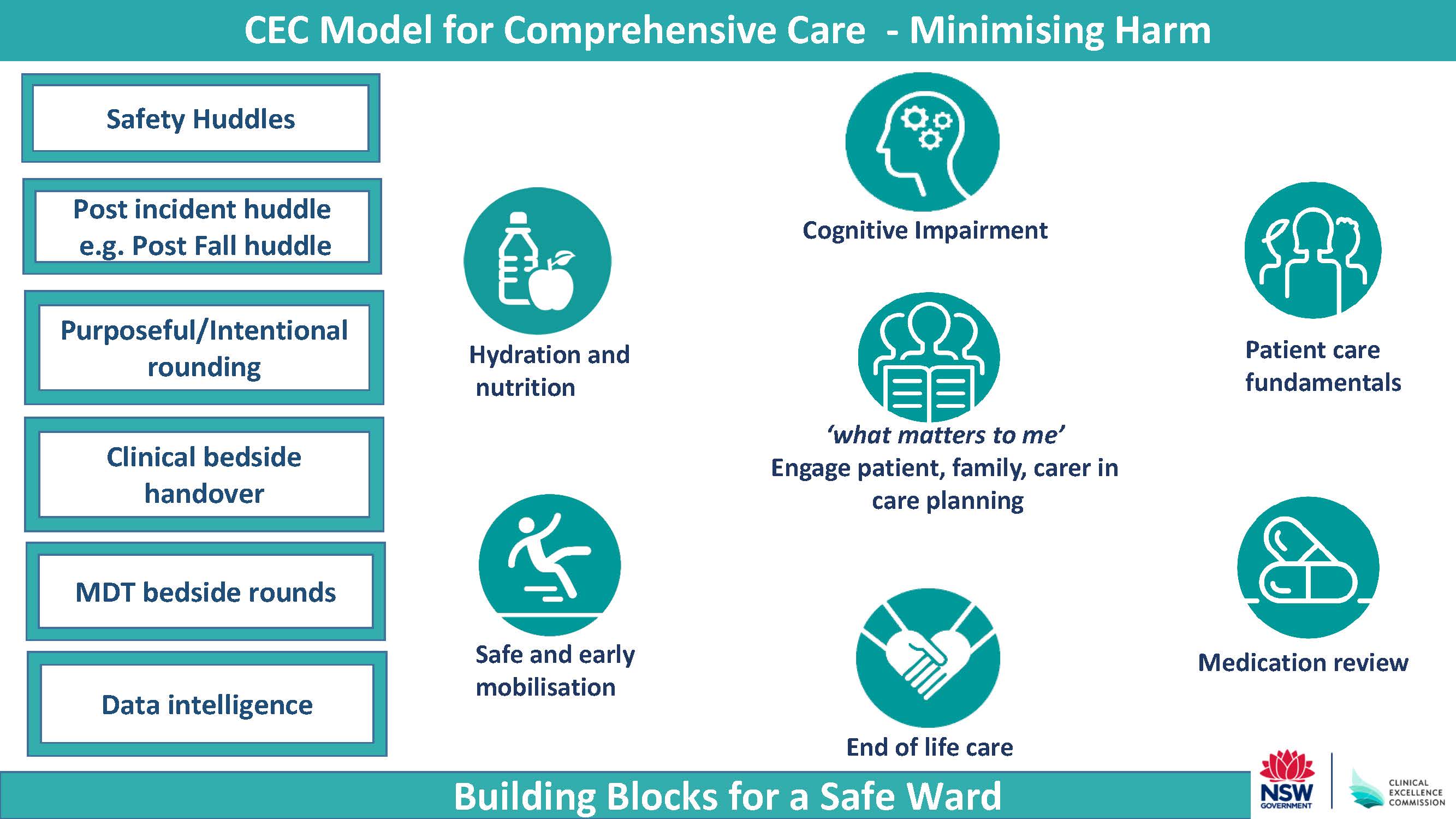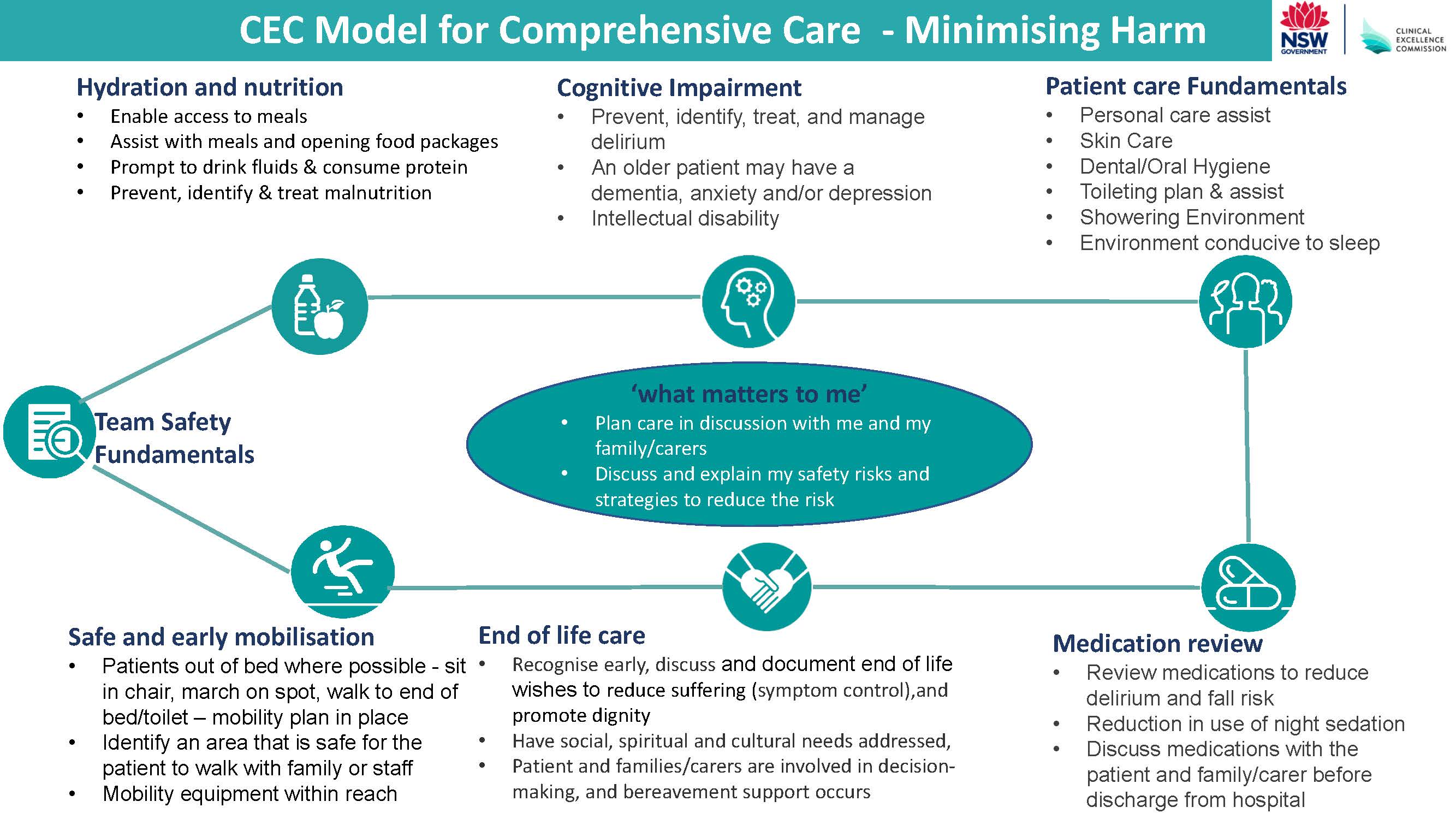Older Persons' Patient Safety Program
The Older Persons' Patient Safety Program (OPPSP) places an emphasis on the care of older people and to promote safe, reliable and high value care. There is an increase in the number of older people living longer with multiple co-morbidities in our communities resulting in increasing admissions to hospital for care.
The OPPSP has evolved from work in Pressure Injury Prevention and the NSW Fall Prevention Program including Leading Better Value Care (LBVC) Falls in hospital initiative.
Our approach is to support Quality Improvement initiatives following the Institute for Healthcare Improvement (IHI) quality improvement methodology to help reduce serious harm and to improve the safety of older persons.
The OPPSP goal is to:
- support Local Health Districts to work towards establishing an OPPSP
- that the immediate care needs of older peoples are met, and their safety risk factors are addressed
- there is ongoing evidence of quality initiatives driving improved health and wellbeing outcomes.
Comprehensive Care – Minimising Harm model
OPPSP Comprehensive Care – Minimising Harm (CC-MH) model places a focus on safe care for older people especially those with frailty, cognitive impairment and decreased mobility. It aligns with the National Safety and Quality Health Service Standards (NSQHSS), Comprehensive Care and Partnering with Consumers standards.
Comprehensive Care – Minimising Harm model
There is a shift to identifying individual patient risk factors and implementing patient focused interventions (fall and pressure injury risks have been included in the model as component of safe care).
This model incorporates team safety fundamentals and clinical care actions that address patient fundamental care needs.
It is anticipated that through improved focus on minimising harm there will be overtime a reduction in Hospital Acquired Complications (HACs) such as falls, pressure injury, delirium, malnutrition and infection (urinary tract infection and pneumonia).


